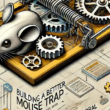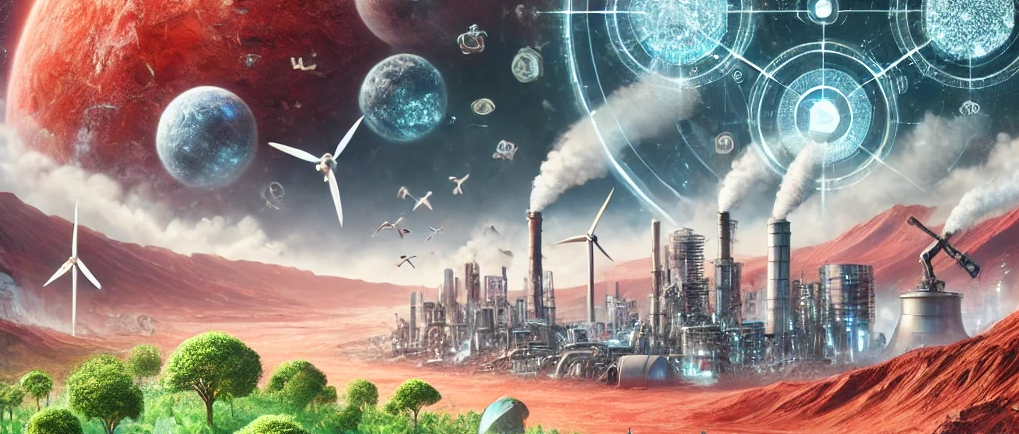As a “DevRel” person, I’m disappointed in how often our efforts are misunderstood and marginalised. In this article, I want to take another slant on the what and why of “DevRel.”
Developer Relations (DevRel) holds the same transformative potential as terraforming in science fiction. It’s cheesy, but it’s pretty accurate. Much like engineers striving to turn a hostile, barren planet into one that can sustain life, DevRel teams are tasked with creating an atmosphere where developers can thrive. Success in both cases isn’t immediate; it requires patience, deliberate planning, and constant care to cultivate a living ecosystem.
But what happens when things go wrong? In the stories we read and watch when terraforming fails, chaos follows. Entire populations suffer, and the newly formed ecosystems collapse. DevRel’s failure to create a sustainable and inclusive environment can yield similar consequences—alienating developers, stifling innovation, and destroying trust.
What DevRel Really Is
At its core, DevRel is about creating conditions where developers are empowered to be successful. That’s something I’m passionate about. It goes far beyond tutorials or community outreach—it’s about building the very foundation of support that developers need to contribute, innovate, and grow. It includes documentation, onboarding processes, feedback channels, and ongoing advocacy to ensure that the developer community feels valued.
In sci-fi, terraforming often serves as the lifeblood of survival for future colonists. Without a breathable atmosphere or water, no life can thrive. Likewise, without strong developer support structures, tech ecosystems will wither. The role of DevRel is to ensure that the tools, community, and culture developers rely on are rich and nurturing.
The Terraforming Analogy
Sci-fi loves exploring the challenges of terraforming. One of the most iconic examples is “Total Recall” (1990), where corporate interests dominate life on Mars. Terraforming there has failed to prioritize the well-being of its inhabitants, instead creating an oppressive environment. Similarly, DevRel efforts focused solely on corporate goals without attending to developer needs can result in frustration, burnout and moving on ….
In “Red Mars” (1992), the first book of Kim Stanley Robinson’s trilogy highlights the complexity of terraforming—a balance of technical achievement, political considerations, and human desires. It turns out terra forming isn’t an on-off switch. There are various options (at least in fiction) of what a terraformed ecosystem looks like. DevRel has a similar balancing act: developers, corporate leaders, and product teams all have different ideas about what a perfect ecosystem looks like. Misalignment or lack of clarity leads to friction, slowing down progress or derailing initiatives entirely.
Crafting the Right Atmosphere for Developers
Just as our (currently hypothetical) planetary scientists aim to create a breathable atmosphere, DevRel teams aim to craft an environment where developers can engage deeply. This involves:
- Clear Documentation: Without proper guidance, developers can feel like they are wandering in the dark.
- Active Community Support: An active community breathes life into developer ecosystems, like the oxygen supply for new planetary settlers.
- Accessible Tools: Engineers need functioning equipment to transform a planet, and developers need robust, intuitive tools to do their work.
- Visible pioneers: Guides, explorers, visionaries, experienced engineers. All are needed to help make the most of any ecosystem, to help it grow and be welcoming. It’s not enough to have a manual – you need to see human beings leading the way.
In “Interstellar” (2014), we see the search for a habitable planet, where creating the right conditions is a matter of survival. For developers, it’s not much different: the “atmosphere” DevRel creates will determine whether they stick around and contribute to the ecosystem or move on to more welcoming environments.
Measuring Success: Growth of the Ecosystem
The ultimate measure of a successful terraforming project is whether life thrives. Similarly, in DevRel, the health of the developer ecosystem is the best indicator of success. Is the community growing? Are developers actively contributing and sharing their work? Are they advocating for your platform?
When we think of failed terraforming attempts, sci-fi offers several exciting examples. In “Alien” (1979) and “Aliens” (1986), human colonies attempt to terraform planets, only to meet deadly consequences due to unforeseen dangers. The dangers might not be as deadly for DevRel, but a poorly managed community can lead to its own brand of devastation: disengagement, mistrust, and stagnation. These are the “xenomorphs” of DevRel, which are difficult to overcome once they take root.
Avoiding Common Pitfalls: Lessons from Terraforming Disasters
As sci-fi often reminds us, terraforming is a high-risk, high-reward endeavour. In Prometheus (2012), humanity’s attempt to terraform an alien world leads to catastrophic consequences. The movie is a stark reminder that when you don’t fully understand the environment you’re trying to shape, things can go very wrong. Similarly, DevRel teams must stay close to the needs of their developer communities. Making changes without fully understanding the community’s expectations or ignoring their feedback can have disastrous effects.
Developer Appreciation: The True Measure of Success
Finally, one of the most critical indicators of success is whether developers appreciate the environment created for them. Just as colonists celebrate when a terraformed planet supports life, developers must feel empowered, supported, and inspired by the tools and communities they engage with.
In “Avatar” (2009), we see a dramatic contrast: the corporate-driven exploitation of Pandora versus the native population’s deep connection to their environment. DevRel can learn from this: fostering genuine connections within the developer community creates a self-sustaining ecosystem, while purely transactional relationships lead to dissatisfaction and, eventually, revolution or exodus.
Conclusion: Terraforming a Developer Ecosystem Requires Patience and Care
Like terraforming, DevRel is not a quick fix. It’s a long-term strategy, requiring thoughtful planning, ongoing adaptation, and constant nurturing. Just as a planet doesn’t become habitable overnight, a developer community doesn’t thrive without sustained effort.
The science fiction examples of failed terraforming teach us important lessons: neglect, misalignment, or exploitation can quickly undo years of hard work. For DevRel teams, the goal is to create an environment where developers not only survive but also flourish, contributing back to the ecosystem they helped create.
In the end, both terraforming and DevRel are about building something bigger than any one person —a living, breathing ecosystem that can continue and evolve over time.




